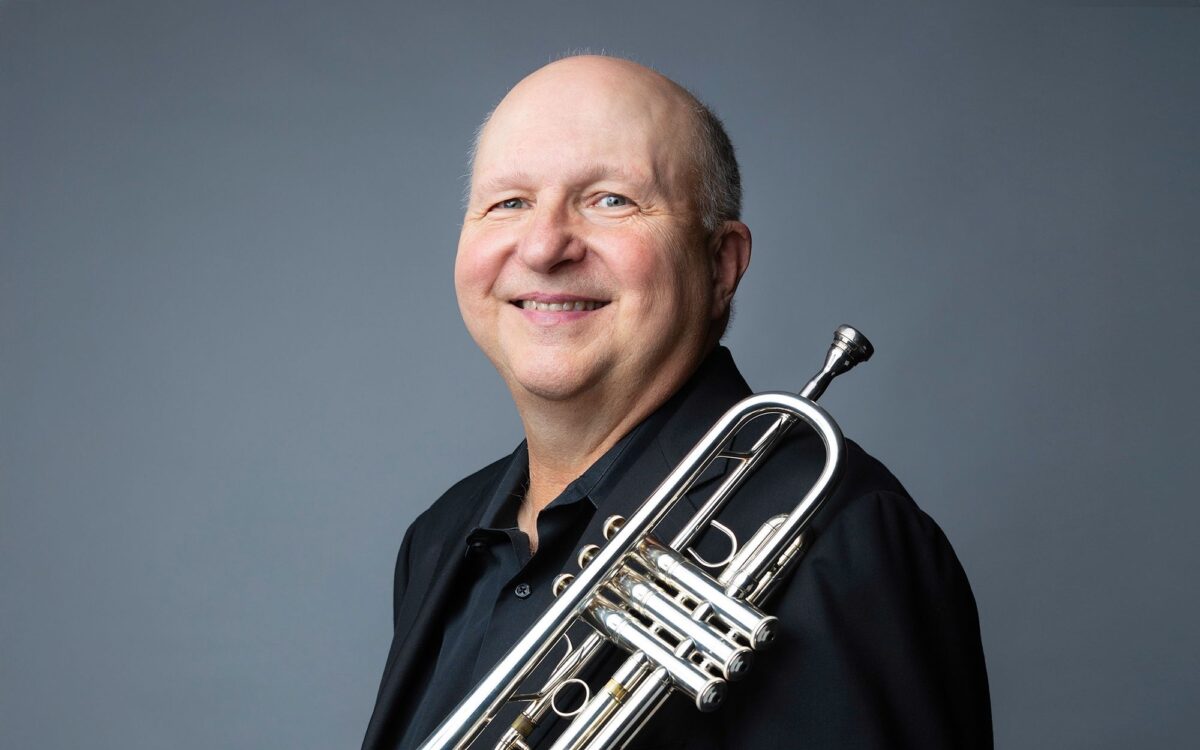Trumpet Concerto
Detlev Glanert was born September 6, 1960, in Hamburg, Germany, and lives in Berlin, Germany. He composed his Concerto for Trumpet and Orchestra in 2019 on commission from the Boston Symphony Orchestra and the Tanglewood Music Center Orchestra expressly for BSO Principal Trumpet Thomas Rolfs, through the generous support of the New Works Fund established by the Massachusetts Cultural Council, a state agency. Thomas Rolfs was soloist in the premiere on July 8, 2019, with the Tanglewood Music Center Orchestra led by Andris Nelsons in Seiji Ozawa Hall at Tanglewood. Nelsons leads the first Boston Symphony Orchestra performances of the concerto on April 25-27, 2024.
In addition to the solo trumpet, the score of the Trumpet Concerto calls for piccolo, 2 flutes, 2 oboes, English horn, 2 clarinets, bass clarinet, 2 bassoons, contrabassoon, 4 horns, 3 trumpets, 3 trombones, tuba, timpani, percussion (3 players: crotales, glockenspiel, xylophone, tubular bells, suspended cymbal, sizzle cymbal, crash cymbals, tam-tam, wind machine, snare drum, tom-toms), and strings (first and second violins, violas, cellos, and double basses). The concerto is about 25 minutes long.
Oliver Knussen, the late composer-conductor who did as much in his time for the cause of recent music as anyone, once spoke of his deep admiration for living composers in the vein of Copland, Britten, and Shostakovich—individuals “prized by their peers and beloved by the public, strong figures that represent an intelligent mainstream. Not a talking-down-to-your-audience mainstream.” If Knussen were still here, he would no doubt describe Detlev Glanert as just such a figure. One of the most successful opera composers on the international scene, Glanert crafts music of immediate rhetorical sweep and honesty of utterance. A pupil of Hans Werner Henze, who stressed music’s function as “a means of communication and understanding,” Glanert gravitates toward musical drama as a tool for probing the most basic facets of the human situation. This is no less true of his symphonic and instrumental works, and so for Glanert, non-texted music always involves metaphors of scenography and interpersonal conflict: “I see solo instruments and their gestures, motives, and themes in terms of personalities, as artificial persons in an invisible drama. My music tells you about the fates of these personalities.”
There is good reason for invoking Knussen in relation to Glanert’s Concerto for Trumpet and Orchestra, commissioned for BSO principal trumpet Thomas Rolfs: Glanert had just begun work on it when he received word of Knussen’s death in summer 2018. Beloved by many for his generosity and musical intellect, Knussen was a dear friend and podium advocate of Glanert’s—a true role model, and one of his “personal heroes.” Moreover, their history was closely tied to Tanglewood. Glanert had been a TMC Composition Fellow in 1986, the same year Knussen became head of contemporary music activities. Working with Knussen that summer, Glanert says, was among the most formative experiences of his apprenticeship period, helping to teach him the virtues of a meticulous attention to detail.
Though Glanert was initially uncertain what shape the concerto would assume, the news of Knussen’s passing made it clear that the piece would have to be “about him.” Glanert is quick to point out that this does not imply that the soloist represents Knussen—at least, not in any uniform, straightforward manner. He suggests that if the trumpet does at times take on the “Knussen role,” at others it provides more general commentary or recollection. Indeed, the relationship between the soloist’s persona and the features of Knussen’s character memorialized by Glanert is perhaps the primary dramaturgical question driving the score.
Though it runs without pause, the concerto adheres broadly to the standard four-movement symphonic blueprint. The turbulent first movement, “Rites,” pits assertive material, full of orchestral storm and stress (later, with vivid use of wind machine) against a more halting, lyrical idea. Exploring a wide palette of trumpet colors, from expressive swoops to nervy flutter-tonguing, the movement culminates in a kinetic solo cadenza, which soon leads into the slow “Songs.” It “could be heard as a song of farewell,” offers Glanert—a “leave-taking” à la Gustav Mahler, whose music has long been a lodestar for the composer. Glanert also describes “Songs” as a kind of blues, as well as an homage to all of the 20th-century American concert music to which Knussen helped open his eyes. Perhaps the movement also reflects the sensibility of Lulu, the second opera by Knussen’s favorite composer, Alban Berg, the sound-world of which was itself tinged with jazz colors. Either way, “Songs” is also a pivot for another reason, introducing a motive that will be of decisive importance for the rest of the concerto. That motive, which previously appeared in Glanert’s tribute for Knussen’s 50th birthday, Dancing Landscape, consists of a long-long short-long pattern corresponding, like a sonic fingerprint, to the syllables “Ol-ly Knus-sen.” (Knussen’s friends and colleagues called him “Olly.”)
The scherzo-like “Dances” sees the soloist take up the bright piccolo trumpet, and here the music reflects Knussen’s joie de vivre and famously broad sense of humor. The movement progressively gains in urgency, until an orchestral tutti precipitates a second cadenza, in which the soloist (back to the standard trumpet) muses on material from all three previous movements. A kind of transformation occurs, bringing on the benedictory, coda-like “Invocation,” which was Glanert’s way of “giving Knussen his own personal heaven.” The music does not remain totally tranquil, though: in turn it begins to recall the atmosphere of “Rites,” but now recast in a new light, until the concerto culminates with the trumpet, striving atop the full orchestra, repeatedly singing out the Knussen motive, in a key of ringing resolution.
Matthew Mendez
Matthew Mendez is a New Haven-based musicologist, critic, and annotator who was the 2014 Tanglewood Music Center Publications Fellow. He was the recipient of a 2016 ASCAP Foundation Deems Taylor/ Virgil Thomson Award for outstanding music journalism.

